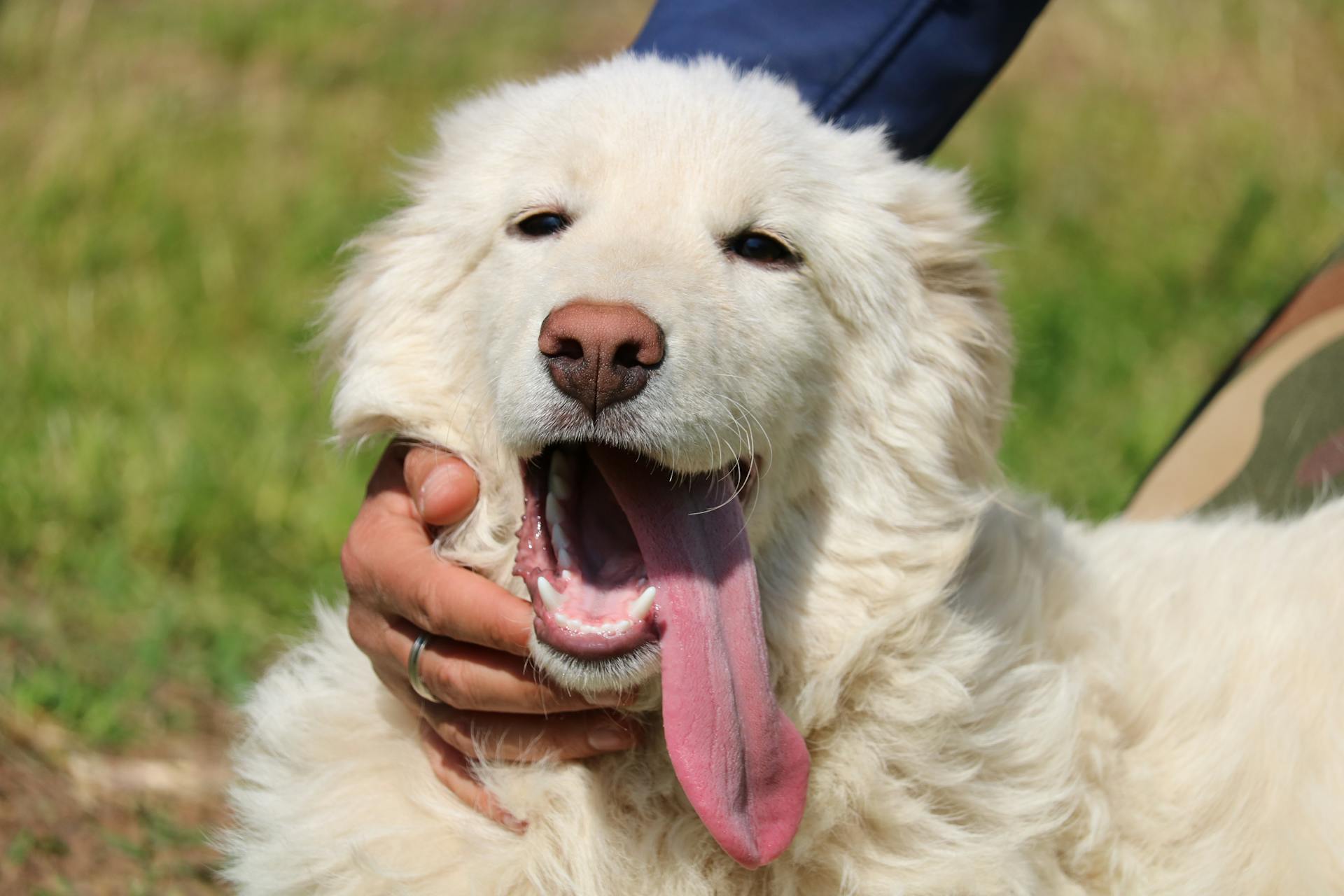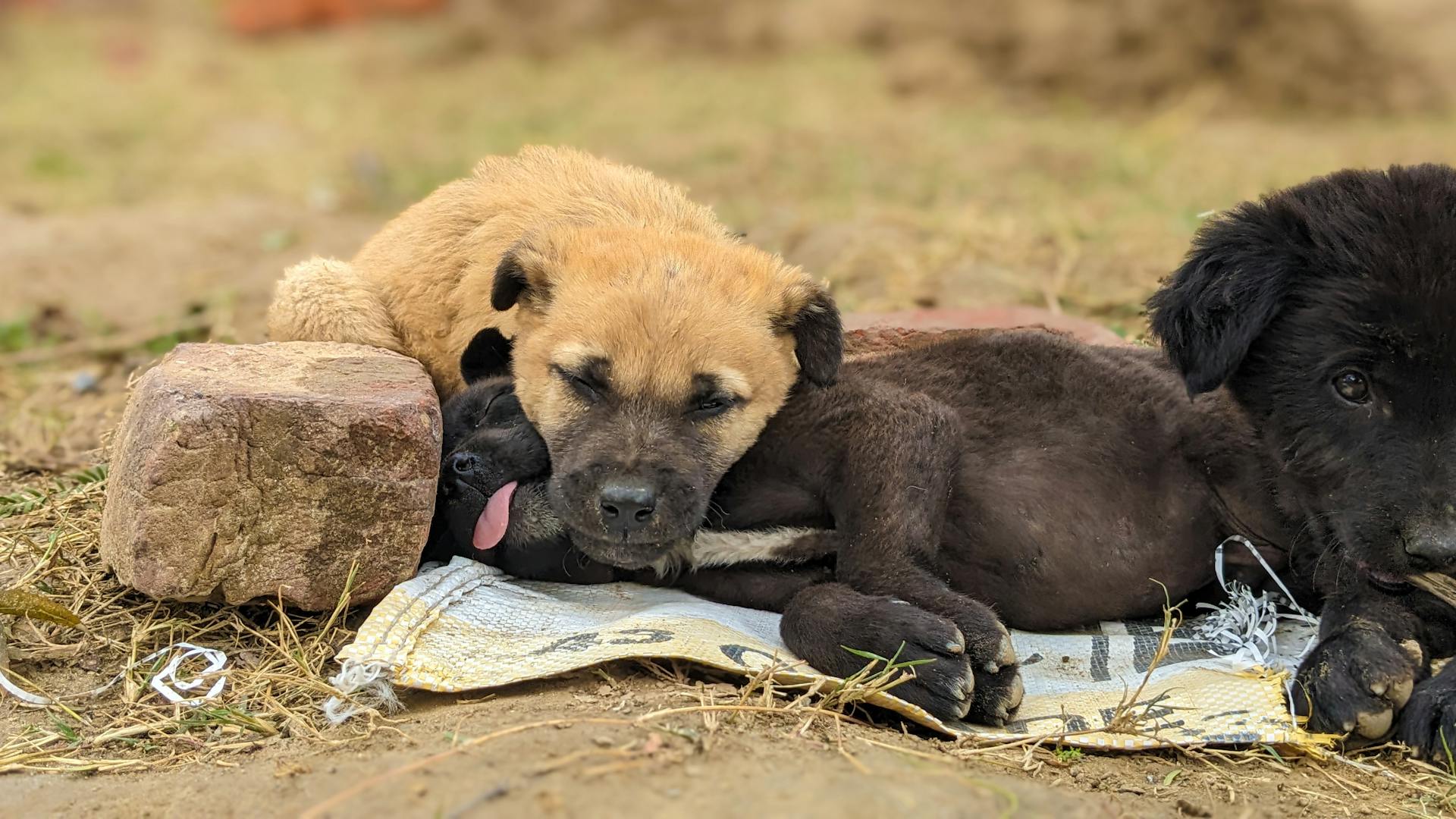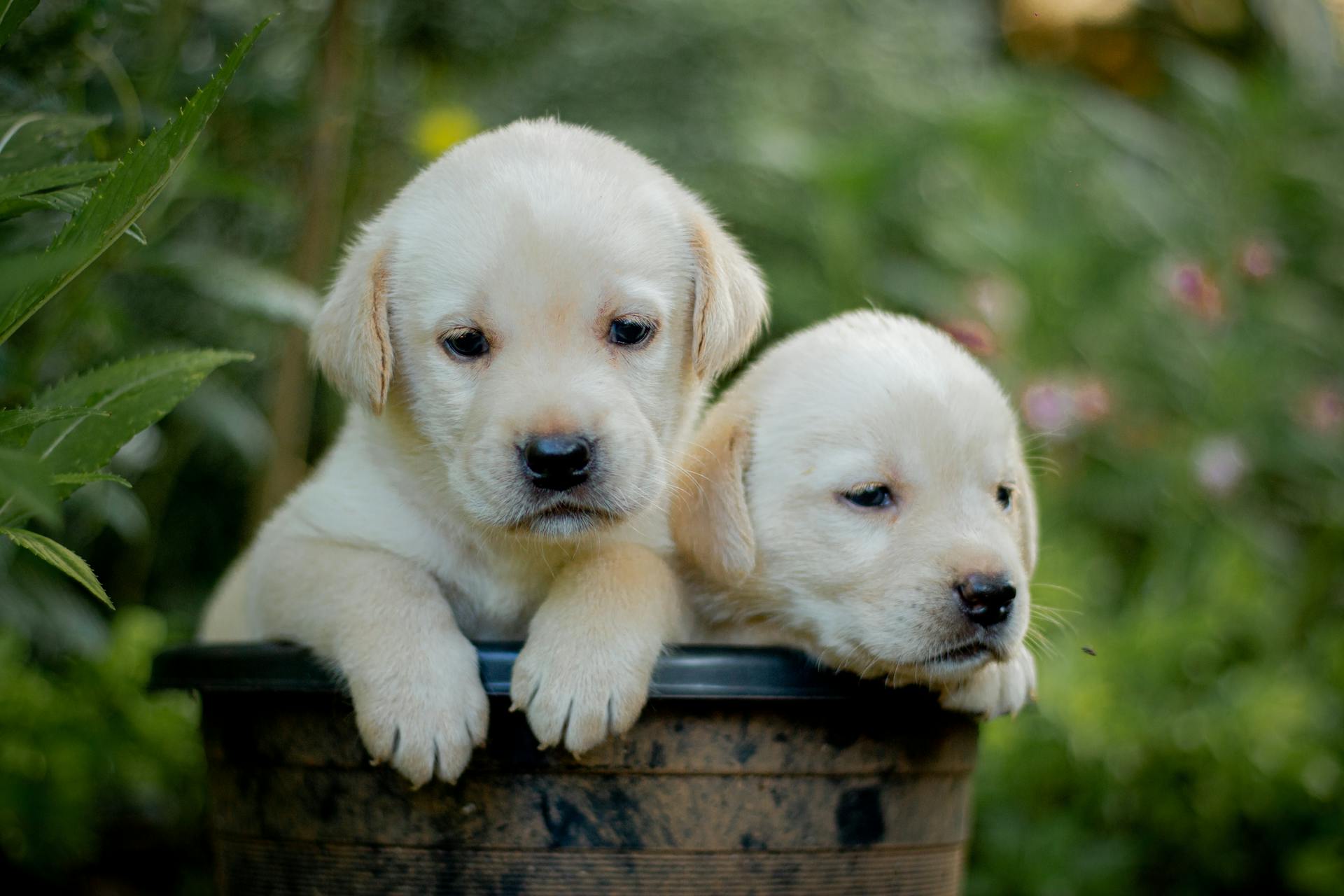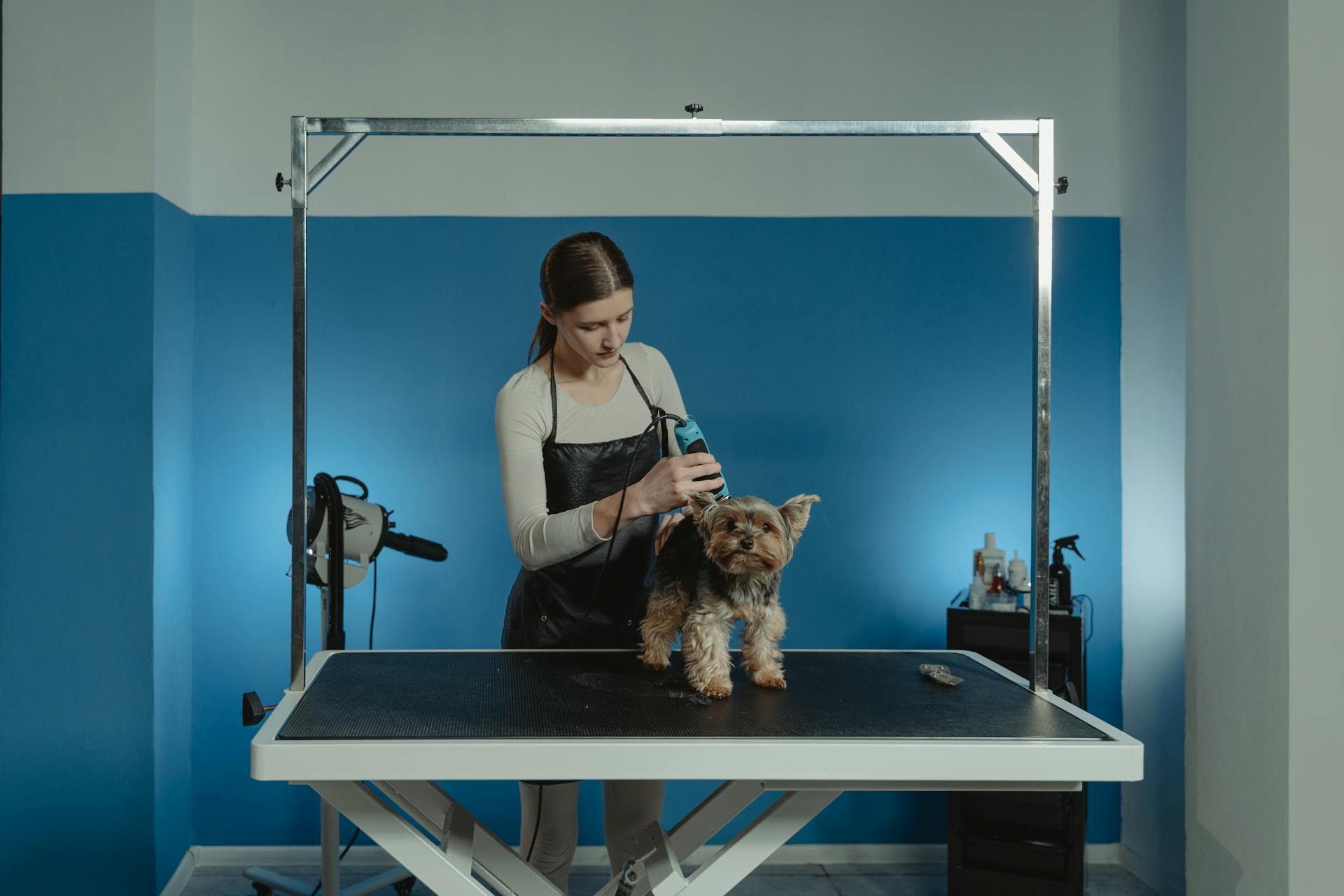
Rat Terrier Mix Puppies are known for their energetic and playful personalities, requiring regular exercise to keep them happy and healthy.
They thrive on daily walks and playtime, making them a great companion for active families.
Their small size and adaptable nature make them perfect for city living or apartments.
Rat Terrier Mix Puppies are intelligent and easy to train, responding well to positive reinforcement techniques.
They are highly social dogs that require attention and interaction from their owners, so be prepared to spend quality time with your new furry friend.
Breed Characteristics
Rat Terrier mix puppies are a big personality in a compact body. Inquisitive and highly intelligent, they thrive on puzzles and games.
They give 100 percent effort whether they're hunting vermin, running agility, or having a training session. This makes them a great companion for active families.
These small-sized dogs are usually very friendly and tend to get along with kids and other dogs, but proper socialization from a young age is key.
Recommended read: Types of Rat Terrier Dogs
History
The Rat Terrier breed has a rich history that dates back to the early 20th century. They originated on American farms, where they were bred to catch rats and other pests.
Their ancestors include the Fox Terrier, Bull Terrier, Manchester Terrier, and Old English White Terrier, among others. Farmers used these breeds to create a dog that could excel at catching fast-moving rodents.
In the Midwest, Rat Terriers were bred with Whippets and Italian Greyhounds to produce a more agile and quick-footed dog. This combination allowed them to keep up with the fast-moving jackrabbit problem.
The Rat Terrier's strong sense of smell comes from their Beagle heritage, while their speed comes from the Whippet. They were also bred with Toy Fox Terriers in the 1920s to produce a toy-sized offspring.
The breed was once a familiar presence on farms between the 1910s and 1940s. However, with the introduction of poison as a primary method for rodent control, their popularity declined.
A resurgence in the late 1970s led to the development of new strains, including the Decker Rat Terrier, which was created by Milton Decker to produce a robust dog with versatile hunting abilities.
Take a look at this: Miniature Toy Rat Terrier
Size
The Rat Terrier is a small and sturdy dog, typically ranging between 13 to 16 inches in height.
The breed comes in different sizes, with the Decker Rat Terrier being slightly larger, ranging from 22 to 40 pounds.
A male Decker Rat Terrier should be around 16 to 19 inches in height, while a female should be around 16 to 17 inches.
The miniature Rat Terrier is an even smaller version, weighing between 10 to 18 pounds.
He should not be larger than 15 inches in height.
You might like: Decker Rat Terrier
Temperament
Rat Terriers are a big personality in a compact body, making them a joy to be around. They're highly intelligent and inquisitive, which means they'll keep you on your toes.
Rat Terriers are naturally wary of strangers and may take some time to warm up to new people. However, with proper socialization, they'll eventually become friendly and welcoming.
These little dogs are fearless and love to please, which can make them a bit mischievous if they don't get enough exercise. A tired dog is a happy dog, so be sure to provide them with plenty of physical and mental stimulation.
Additional reading: National Dog Show Rat Terrier
As a breed, Rat Terriers are naturally good with kids and other dogs, but it's essential to introduce them to new people and environments from an early age. This will help them become well-rounded and confident companions.
Rat Terriers are also natural watchdogs and will bark to alert you to potential strangers or threats. While this can be a useful trait, it's essential to teach them when to calm down and not get too excited.
Rat Terriers are devoted to their people and love to be included in family activities. They can get a bit clingy if left alone for too long, so be prepared to spend quality time with your furry friend.
You might enjoy: Manchester Terrier Puppies
Shar Pei Shaprei
The Shar Pei Shaprei is a unique breed that's a mix of the Shar-Pei and the Rat Terrier. This mix can be a bit challenging to train, but with long hours of training and socialization, your pet will become adept at meeting new people.
The Shar-Pei is an independent, intelligent, and loyal dog that originated in China. It's caring towards its owner, but can come off as standoffish when it comes to strangers.
The Rat Terrier, on the other hand, is friendly with everyone. This means that your Shaprei may inherit the friendly genes from the Rat Terrier, making it a great companion.
To ensure your Shaprei becomes a well-behaved pet, it's essential to provide it with long hours of training and socialization. This will help tame the high energy if it takes after the Rat Terrier genes.
Here's a quick rundown of the characteristics you can expect from a Shar Pei Shaprei:
- Independent: Like the Shar-Pei, your Shaprei may be independent and require time to warm up to new people.
- Intelligent: Both the Shar-Pei and Rat Terrier are intelligent breeds, making your Shaprei a smart pet to train.
- Loyal: Your Shaprei will be loyal to its owner, but may take time to bond with strangers.
- High energy: If your Shaprei takes after the Rat Terrier, it may have high energy levels and require regular exercise.
Pitbull
The Pitbull is a versatile breed that's perfect for active owners. They're known for being tenacious and competitive in events like hunting.
One of the standout features of the Pitbull is its muscular build. You can expect a broad jaw and a square-like face, which is quite distinctive.
For your interest: Pitbull Bull Terrier Mix
Their short coat makes them relatively easy to groom, but don't forget to brush them frequently to keep their coat shiny.
In terms of size, the Pitbull can grow up to 22 inches and 110 pounds, so they're definitely not a small breed.
They prefer warm climates and are generally a healthy breed, making them a great choice for many families.
Choosing the Right Breed
Rat terriers are generally plucky, healthy pups, and one of the longest-living breeds, living up to 12-18 years on average.
Prospective pet parents should review the personalities and health factors for both breeds, just like a doggie instruction manual, to properly train, socialize, care for, and enjoy their special mixed breed dog.
Rat terriers are prone to allergies and sometimes develop issues with hip dysplasia and luxating patella, or slipped knee caps.
A veterinary consultation will help you gain the full health picture for your mix, so don't hesitate to schedule one.
Readers also liked: Rat Terrier Diseases
It's essential to research, interview, and visit breeders before making a decision, taking at least a couple of months or longer to do so.
The breeder should be willing to have you at their facility or home, and if they're not, it may be a red flag.
If a breeder isn't willing to show you their facility, they may be running a puppy mill.
A reputable breeder will ask you tough questions and vet prospective puppy owners, so be prepared to answer theirs.
This shows they're passionate about what they do and have the health and wellness of their dogs at the forefront of their minds.
Recommended read: Rat Terrier Breeder
Health and Care
Rat Terrier mix puppies are known for their energetic and playful nature, but they also require proper care and attention to stay healthy. Crate training is a good idea to prevent destructive behavior and save on vet bills.
A Rat Terrier's life expectancy is 12-18 years, making them a long-term companion. With regular exercise and a healthy lifestyle, they can live a happy and active life.
A fresh viewpoint: Lifespan of a Rat Terrier Dog
Rat Terriers are prone to certain health issues, including hip dysplasia, patellar luxation, Legg-Calve-Perthes disease, heart disease, and eye disease. These conditions can be managed with proper care and veterinary attention.
Here are some common health concerns to look out for in your Rat Terrier mix puppy:
- Hip Dysplasia: loose hip joints, pain, cartilage loss, and scar tissue
- Patellar Luxation: kneecap dislocation, pain, and loss of function
- Legg-Calve-Perthes Disease: hip joint deterioration, pain, and surgery
- Heart Disease: heart problems, heart murmur, and echocardiogram
- Eye Disease: primary lens luxation, teary, red, and/or cloudy eyes, and blindness
Health Needs
Rat Terriers are generally a healthy breed, but like all dogs, they can be prone to certain health issues. They have an average lifespan of 12-18 years.
Hip Dysplasia is a common condition that can cause pain and cartilage loss if not addressed. Treatment options include weight management, physical therapy, or surgery.
Patellar Luxation is another condition that can cause the kneecap to dislocate, resulting in pain and loss of function. Joint supplements, pain medication, and surgery may be necessary to alleviate symptoms.
Legg-Calve-Perthes Disease is a condition that affects the hip joint, causing the ball to deteriorate and become painful. Surgery is often the treatment of choice.

Heart Disease can be a concern for Rat Terriers as they age. Regular check-ups with your veterinarian can help monitor their heart health.
Eye Disease is also a concern for Rat Terriers, with primary lens luxation being a common issue. This can cause teary, red, and cloudy-looking eyes, and can potentially lead to blindness.
To ensure your Rat Terrier stays healthy, it's essential to monitor their weight and overall health. Here are some guidelines to follow:
Remember to measure your Rat Terrier's food and feed them twice a day to keep them in good shape.
Care
Rat Terriers are relatively low-maintenance when it comes to grooming, but they do require regular care to stay healthy and happy.
To prevent destructive behavior, crate train your Rat Terrier from an early age. This will help save you from expensive repairs and vet bills.
Rat Terriers need daily exercise and a dedicated owner to thrive. They're affectionate and love family life, making them perfect for apartment dwellers or farm hands.
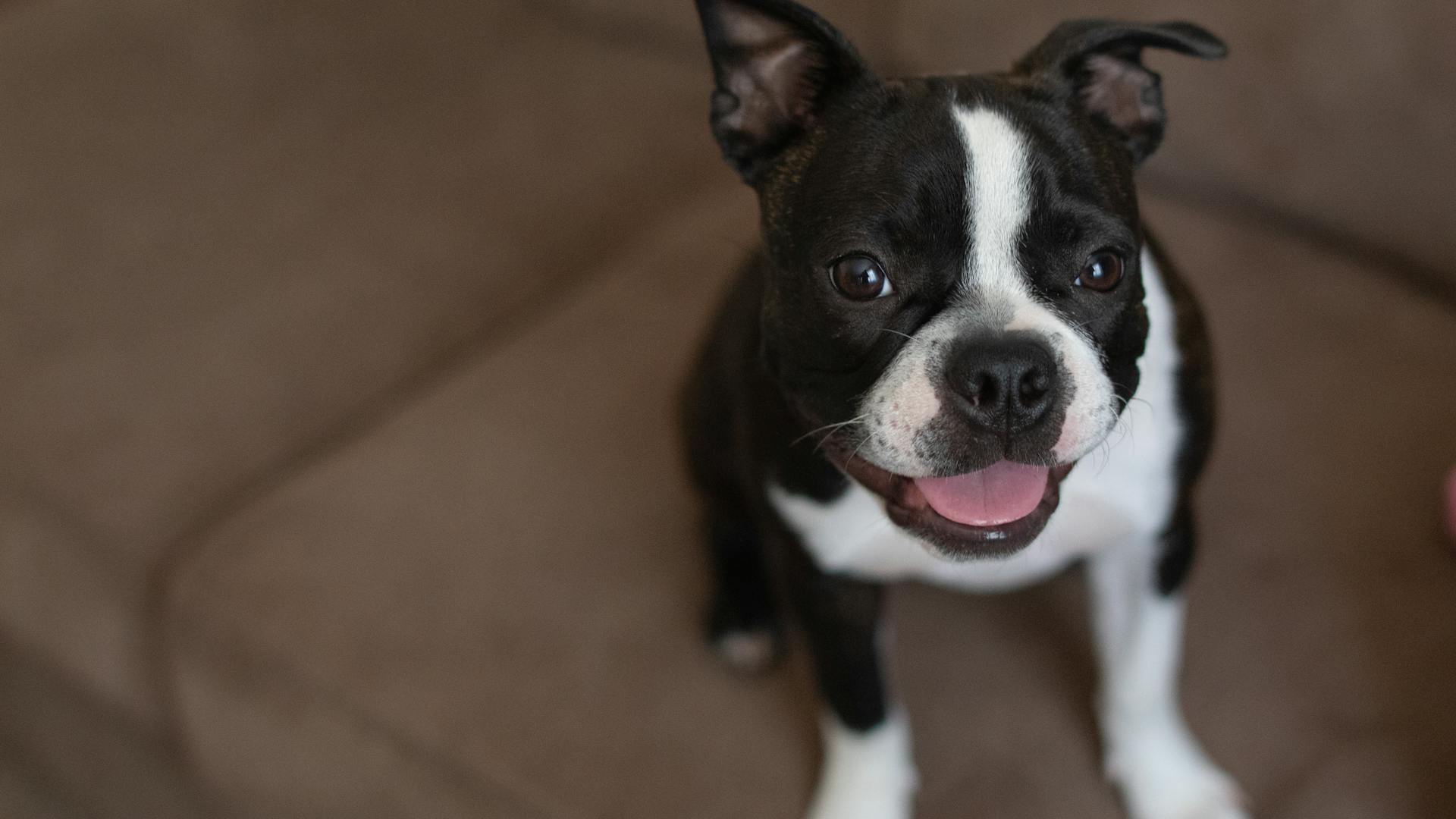
Their short, compact coat requires only a weekly brushing using a curry brush or rubber mitt to keep it shiny and healthy. This will also help prevent shedding throughout the year.
You should bathe your Rat Terrier monthly, unless they get into something messy. A deodorizing spritz can help keep them fresh in between baths.
Regular dental care is crucial for Rat Terriers, who are prone to dental disease. Brush their teeth daily, and schedule annual professional cleanings with your veterinarian.
Trim your Rat Terrier's nails about once a month to prevent painful tears and other problems. Check them weekly to determine how often they need trimming.
Weekly ear cleaning is also important to prevent infections. Check for debris and redness, and consult your vet if you notice anything unusual.
Here's a quick rundown of your Rat Terrier's grooming needs:
- Weekly brushing with a curry brush or rubber mitt
- Monthly bathing, unless needed
- Daily toothbrushing
- Monthly nail trimming
- Weekly ear cleaning
By following these simple care tips, you can keep your Rat Terrier happy, healthy, and well-groomed.
Blue Heeler
The Blue Heeler is a high-energy breed that requires a lot of exercise to stay happy and healthy. They need at least 60 minutes of daily activity to prevent boredom, which can lead to destructive behavior.
This breed is perfect for active families who enjoy outdoor activities and can provide a secure, fenced backyard for their pup to roam around in.
The Blue Heeler's strong jaws and sporty nature make it a great companion for long walks or games of frisbee at the park. With consistent training during its puppy stage, this breed can thrive and live up to 15 years.
However, it's essential to consider the Blue Heeler's strong prey drive and tendency to scare smaller animals, so it's not the best pet for households with smaller pets.
To keep your Blue Heeler happy and engaged, make sure to provide plenty of outdoor toys and activities in your backyard, and take your pup on regular walks and adventures with you.
Broaden your view: Blue Bedlington Terrier Puppies
Training and Exercise
Training and exercise are crucial for any puppy, and Rat Terrier mix puppies are no exception. They are bright, motivated, and fast learners, making them easy to train.
To start, focus on basic commands like sit, stay, and come, and remember that training doesn't end when they grow beyond puppyhood. Rat Terriers love to please and need mental stimulation, so don't hold back on graduating them to more advanced training like nose work or behavior chains.
Rat Terrier mix puppies are also highly energetic, but they don't need a lot of exercise every day. A minimum of 30 minutes of daily exercise should satisfy their wiggles.
A unique perspective: Training Rat Terrier
Exercise
Rat Terriers are high-energy dogs that need regular exercise to stay happy and healthy. They require at least 30 minutes of daily exercise, which can be a walk, run, or playtime in the yard.
If you're an active person, your Rat Terrier will love to join you on your adventures. However, if you're not as energetic, they can get destructive and turn to chewing shoes or barking when bored.
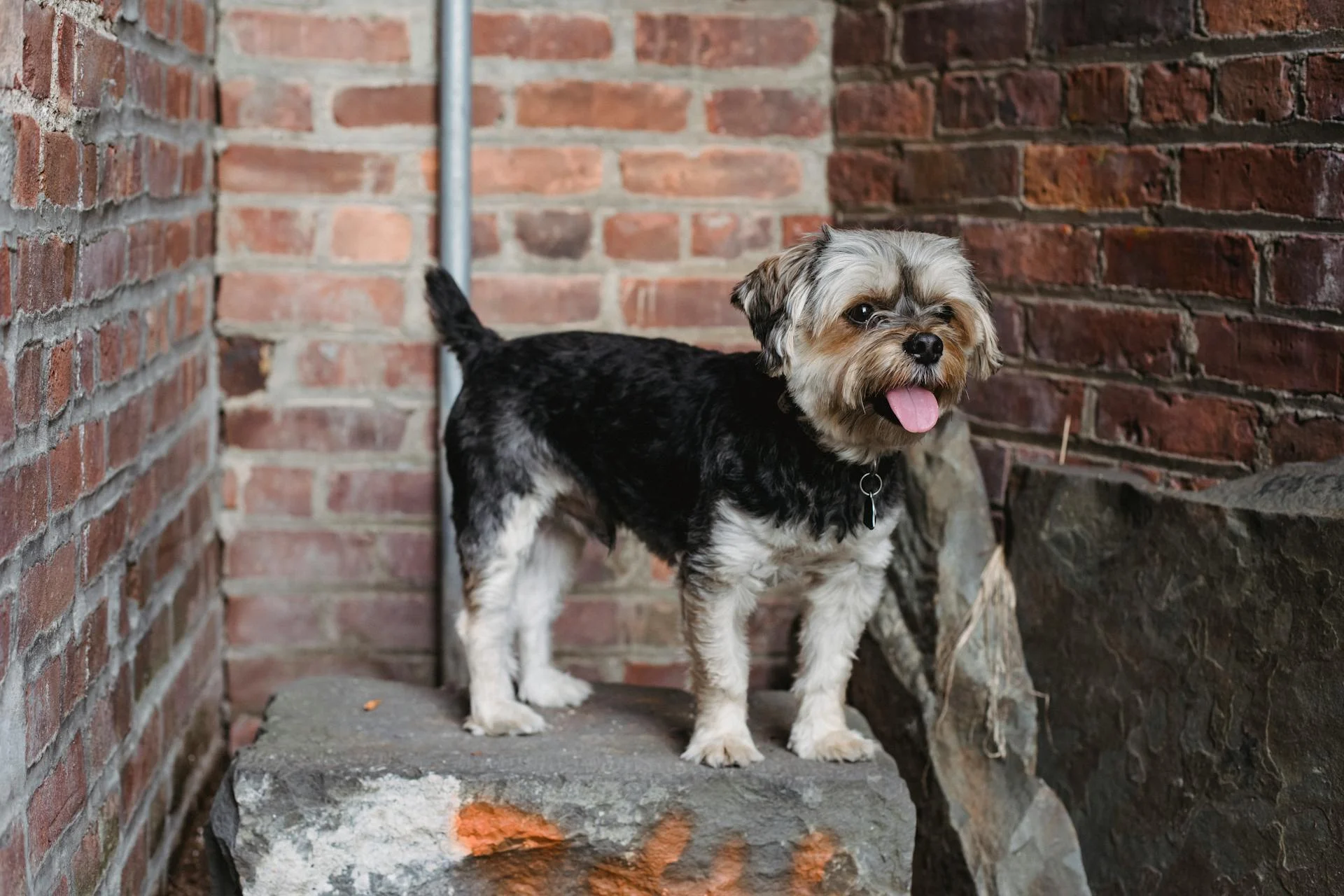
Indoor games like fetch or hide-and-seek are great ways to satisfy their need for play on rainy or snowy days. And, if you're watching TV, letting them tug on a rope is a great way to keep them entertained.
If you involve your Rat Terrier in dog sports like agility, they'll thrive with the high level of activity and become impressive athletes. Just remember to give them plenty of rest to recover.
Some fun activities you can do with your Rat Terrier include taking a day trip to the coast or a lake, where they can splash in the water and get some exercise. To keep them safe in the water, consider investing in a dog life jacket.
Curious to learn more? Check out: Australian Cattle Dog and Rat Terrier Mix
Border Collie Collie
The Border Collie Collie, a mix of a Border Collie and a Rat Terrier, is a fantastic choice for a guard or family dog. They're alert and have a strong instinct to protect, making them excellent watchdogs.
Suggestion: Border Collies Breeders
Their high energy levels mean they require long exercise periods to keep them happy and healthy. This is especially true since both parent breeds are quite energetic.
A Collie Terrier Mix is prone to having wired hair if they don't get regular brushing. This is because of the thick fur of the Border Collie parent.
With proper exercise and grooming, the Collie Terrier Crossbreed makes an excellent companion for families with kids and other animals. However, it's worth noting that they may not be the best fit for homes with cats, as they have a tendency to chase them away due to the Rat Terrier's nature.
Family and Living
Rat terrier mix puppies are naturally good with children, thanks to their friendly and outgoing personalities. They require plenty of attention and interaction to prevent boredom and destructive behavior.
In small living spaces, rat terrier mix puppies can thrive with regular exercise and mental stimulation. They need daily walks and playtime to stay happy and healthy.
Their short coats require minimal grooming, making them a great choice for busy families or those who don't want to spend a lot of time cleaning up after their pets.
Children and Pets
Rat Terriers are wonderfully patient with kids, even kids who aren't part of the family. They are extremely fond of their family kids.
You should always supervise interactions between dogs and young children to prevent any biting or ear or tail pulling on the part of either party. Teach your child never to approach any dog while he's eating or sleeping or to try to take the dog's food away.
No dog, no matter how friendly, should ever be left unsupervised with a child. This is crucial to ensure everyone's safety and happiness.
Rat Terriers generally get along with other dogs, but they can be size-blind and may return aggression if provoked. This means you need to be cautious when introducing them to other dogs, especially if they're larger.
If you have a Rat Terrier and a small pet, like a hamster or mouse, be aware that they may be seen as prey and chased. This is because Rat Terriers are prey-driven, so it's essential to supervise their interactions with small pets.
For your interest: Jack Rat Terrier Puppies
Beagle
The Beagle is a loving creature that gets along well with other animals and is warm around visitors. They are a natural social butterfly, making them a great addition to any family.
Their strong prey drive means you'll often catch them chasing birds or squirrels around your yard. This can be a fun and entertaining sight, but it's also something to be mindful of when letting them out into the yard.
With the right trainer, a Beagle can respond excellently to training. Start with obedience training and house training, and then move on to leash training and teaching them some tricks.
Their smooth coat is a bonus - you won't have to worry about constant shedding. However, a weekly brushing is still a good idea to remove dirt and maintain the shine.
Here's a quick rundown of some key characteristics to keep in mind:
- Naturally loving and social
- Strong prey drive (chases birds and squirrels)
- Responds well to training with a patient trainer
- Smooth coat (low shedding)
Chihuahua
The Chihuahua is a wonderful breed that makes a great pet for many families. They're known for their playful confidence and cuteness, making them a perfect fit for people who want a pet that's both fun and affectionate.
The Ratchua Terrier, a mix of Chihuahua and Rat Terrier, was first discovered in the 1990s and is recognized by the Designer Dogs Kennel Club (DDKC) and the American Canine Hybrid Club (ACHC). This recognition gives us an idea of the breed's popularity and acceptance.
The color of the Ratchua Terrier can have variations of black, sand-white, or tri-color. This is a nice change of pace from the usual solid colors we often see in dog breeds.
If you're considering bringing a Ratchua Terrier into your family, you should know that their coat can be either short or long, depending on their Chihuahua parent. This means you'll need to be prepared for regular grooming sessions to keep their coat looking its best.
Here's a quick rundown of the Ratchua Terrier's possible coat types:
Great Dane
The Great Dane is a breed that's been around for a long time, originally bred to hunt down wild boars. However, over time, the skill and traits for hunting were bred out of them, and now they're known for being noble and gentle creatures.
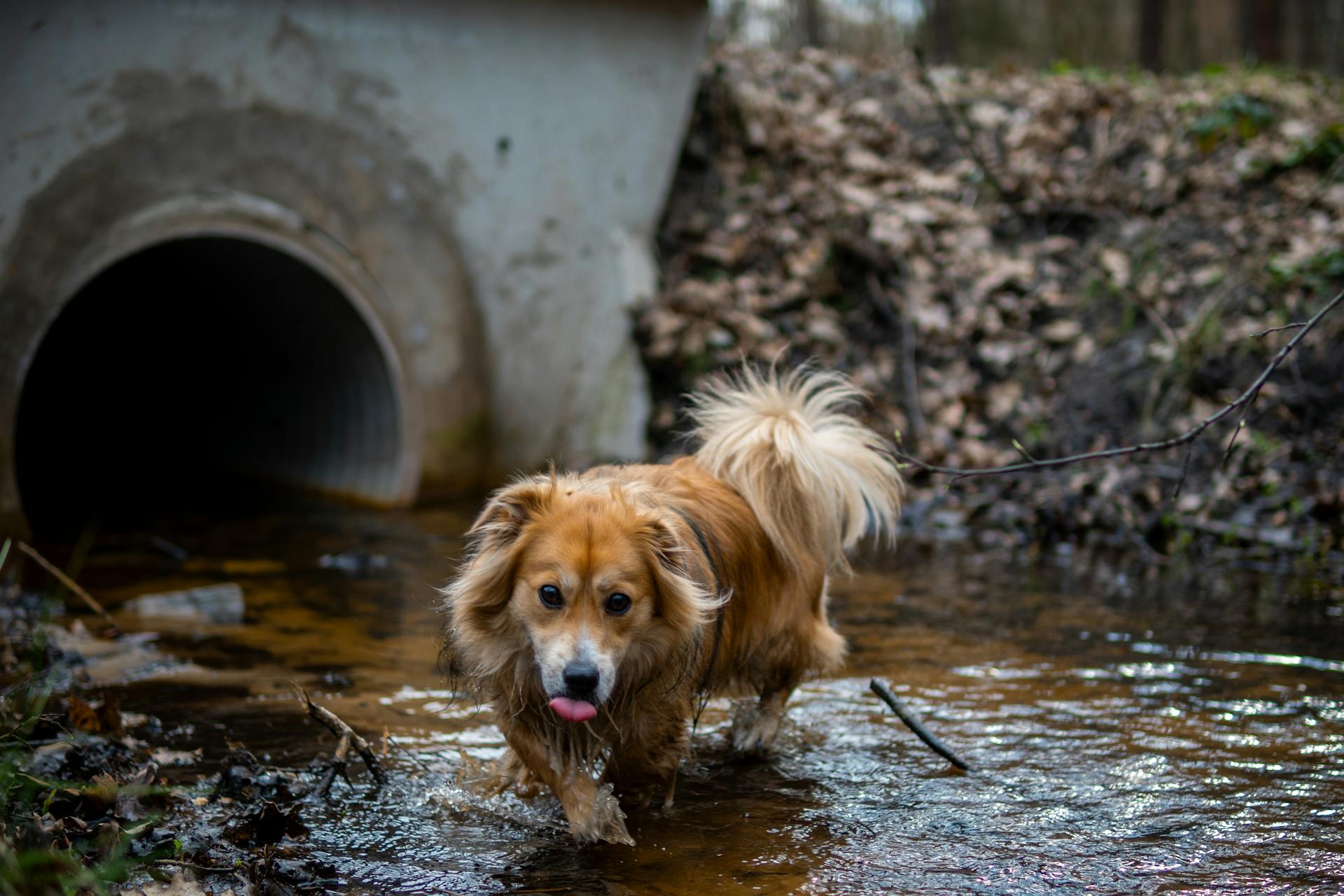
They're often called the 'Gentle Giant' due to their massive size, which can grow up to 34 inches tall. This size can be a problem if you have smaller pets at home, so it's essential to consider this when deciding to bring a Great Dane into your family.
One of the things that makes Great Danes so great is their calm and caring demeanor, which makes them get along well with almost everyone, whether it's a human, dog, or other animal. They're also similar to the Rat Terrier breed in terms of their love for having fun and playing around with children.
If you're considering getting a Ratdane Terrier Mix, which combines the Great Dane with the Rat Terrier, you'll notice that it can either take after the smaller Rat Terrier parent or the larger Great Dane parent. If your puppy inherits the Great Dane genes, it's crucial to train it immediately, as its enormous size can be a problem for children or smaller pets.
Australian Shepherd Aussie
The Australian Shepherd Rat Terrier Mix, also known as the Ratterrier Aussie, can make a wonderful addition to your family if you're willing to put in the time and effort to train it.
If your Ratterrier Aussie takes after the Rat Terrier parent, you can expect a feisty dog that requires a strong and dominating owner to train. This is why early socialization and training are crucial, especially when your dog is still a puppy.
The Ratterrier Aussie Crossbreed is generally a healthy dog, but like any breed, it can be prone to certain illnesses such as joint dysplasia, allergies, and eye problems.
Regular grooming and baths can help prevent some of these illnesses, as well as reduce shedding.
Here's a list of potential health issues to be aware of:
- Joint dysplasia
- Allergies
- Eye problems
By being aware of these potential health issues and taking steps to prevent them, you can help ensure your Ratterrier Aussie lives a long and happy life.
Pug Prug
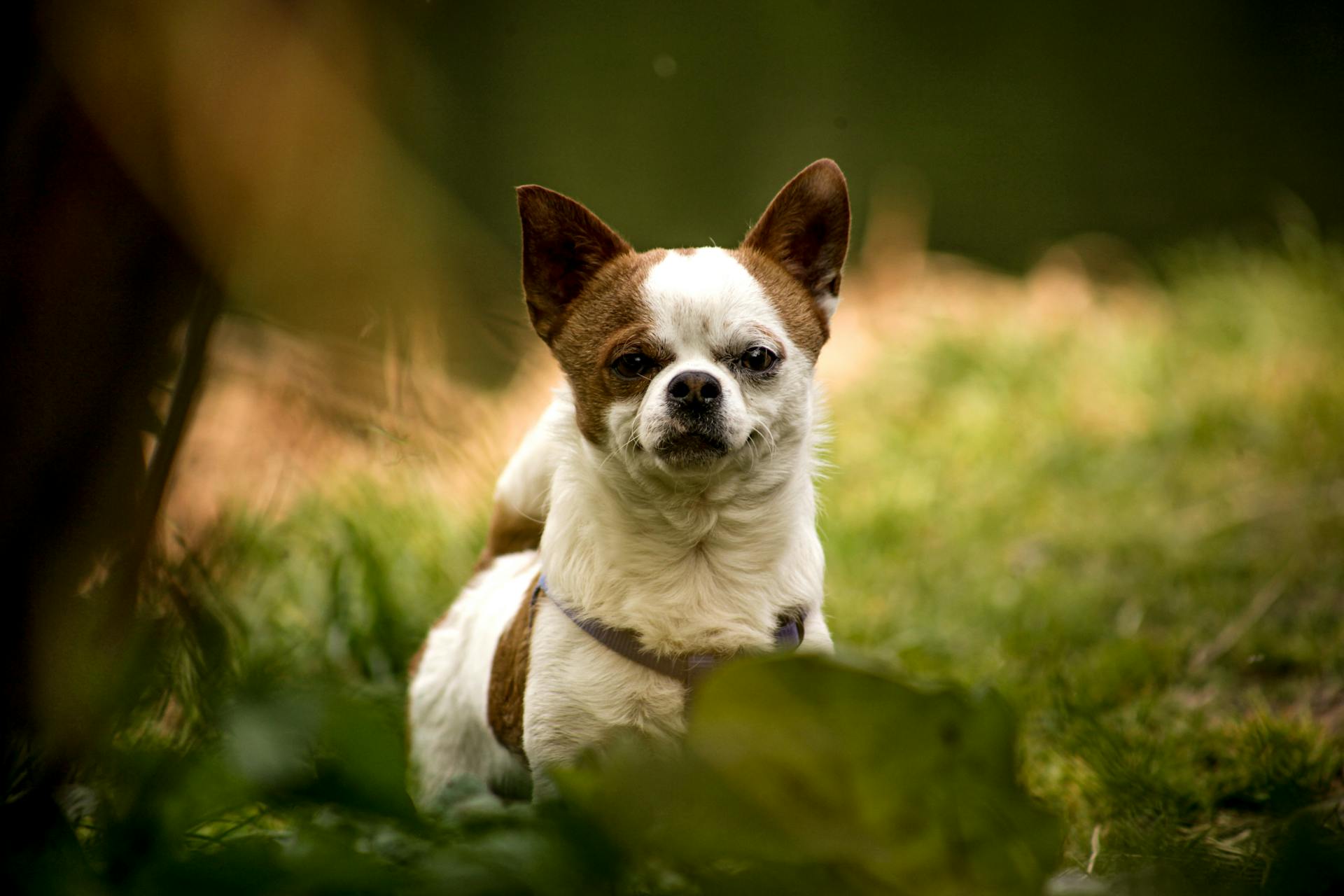
The Pug Prug is a unique and lovable breed. They're a mix of a Pug and a Rat Terrier, resulting in a friendly and energetic dog that gets along well with children and visitors.
One thing to keep in mind is that they might not be the best fit for households with other animals, as both parent breeds have a strong prey drive. This means they might view smaller pets as potential targets.
The Pug Prug is relatively small in size, which makes them a great choice for families living in apartments or homes with smaller yards.
Their appearance can vary, but if they take on the Pug genes, they'll likely have a squarish shape, short muzzle, and broad head.
Intriguing read: Pug and Yorkie Mix Dog
Cocker Spaniel
The Cocker Spaniel is a sweet breed known for its loving nature, making it a great addition to any family. They are highly social and love spending time with their owners, which is why they thrive on attention and interaction.
One key thing to keep in mind is that Cocker Spaniels have a strong need for training at a young age to prevent mischief around the house. Consistent training and socialization will help them become well-behaved and well-adjusted members of the family.
In terms of size, Cocker Spaniels are generally small dogs, which makes them a great fit for families with smaller living spaces. They are also relatively low-maintenance when it comes to exercise, requiring daily walks and playtime but not excessive amounts of physical activity.
If you're considering bringing a Cocker Spaniel into your family, be prepared for a lifelong commitment to providing love, attention, and care. With the right training and socialization, they will reward you with years of loyalty and companionship.
Here are some key characteristics of the Cocker Spaniel breed:
American Bulldog
The American Bulldog is a muscular and stocky breed built for chasing down lost cattle and helping with work.
Its protective and sweet nature makes it a great housepet, which I've seen firsthand with friends who have one.
The American Bulldog was bred to search for certain animals, giving it a strong work ethic and instinct.
However, if you're considering bringing an American Bulldog into your family, be aware that it can become attached to its owner and may not do well with long periods of separation.
This mix of loyalty and attachment can make for a wonderful companion, but it also requires regular attention and interaction.
If you're willing to provide the necessary care and attention, an American Bulldog can make a loving and devoted member of your family.
Golden
If you're considering bringing a Golden Terrier into your family, you'll want to know they're a loyal breed. They're obedient and loving, making them a great addition to any household.
The Golden Terrier is a natural hunter, but with consistent training during their puppy stage, they can excel in rescue operations and competitive events. This requires patience and dedication, but the results are well worth it.
Intriguing read: Golden Husky Mix Puppy
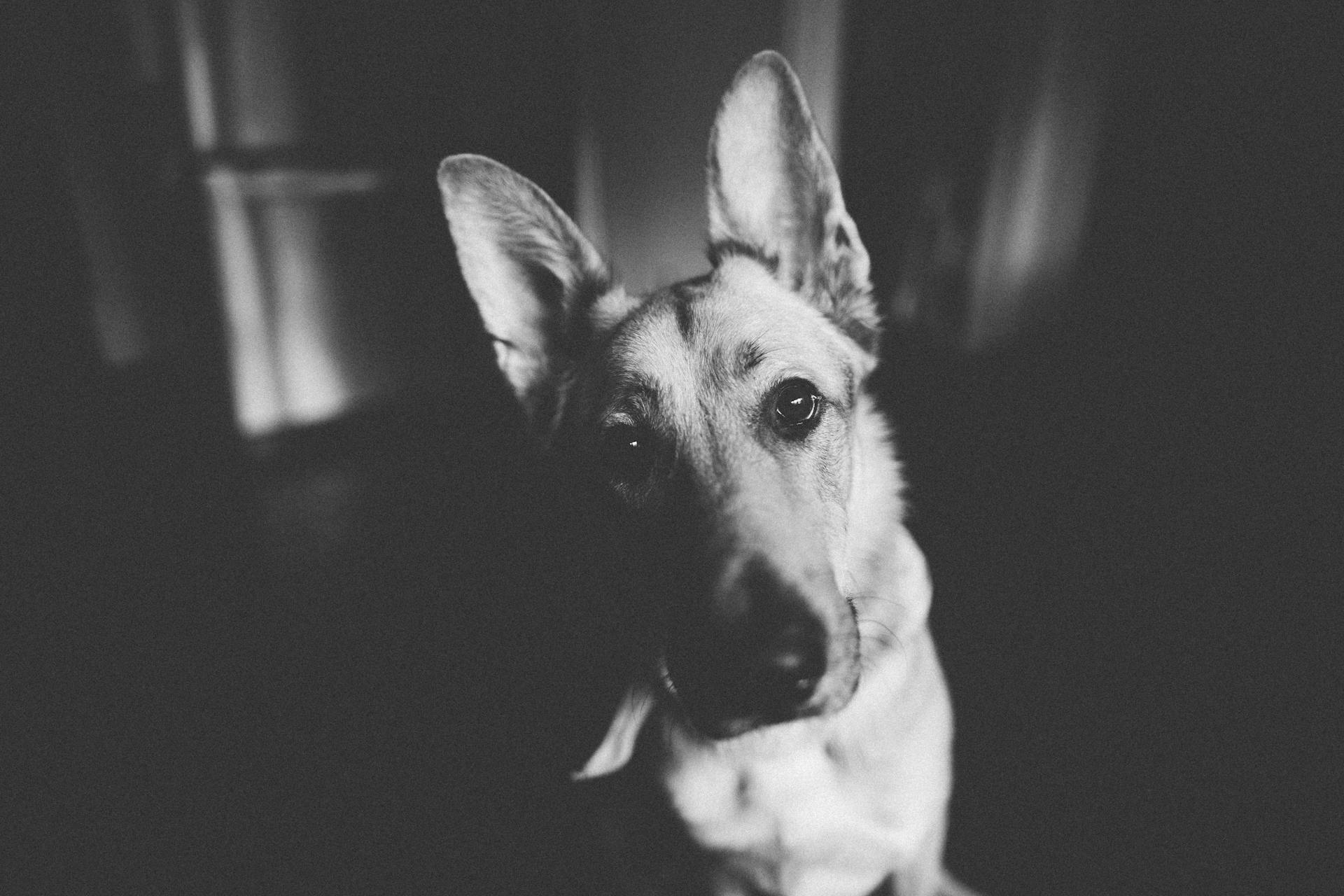
One thing to keep in mind is that the Golden Terrier's coat can be a bit unpredictable. They typically have a short coat, but if the Golden Retriever's genes are dominant, they may have a fuller coat that requires frequent brushing.
Here are some key characteristics of the Golden Terrier breed:
- Loyal and obedient
- Natural hunters
- May have a fuller coat that requires frequent brushing
Overall, the Golden Terrier is a wonderful breed that can bring joy and companionship to any family.
French Bulldog
French Bulldogs make wonderful pets, but did you know that their mix with another breed, the Rat Terrier, can result in a unique and lovable companion called the French Terrier?
The cost of a French Terrier Mix can start at $900, but prices may vary depending on your location.
If you're considering bringing a French Terrier into your family, be aware that they can be prone to back problems, so it's essential to keep them safe from high surfaces.
These adorable dogs are sweet and affectionate towards their owners, but they can come across as aggressive towards strangers, emphasizing the need for proper training and socialization.
One distinctive feature of the French Terrier is its bat-shaped ears, a trait inherited from the French Bulldog parent.
Their shape can vary, but for the ears, you can expect them to be bat-shaped, just like the French Bulldog parent.
Doberman
The Doberman is a breed known for its noble qualities and magnificent physique. It's considered one of the most excellent dog protectors.
Its intelligence is also quite impressive, making it a great companion for families. With the right training, a Doberman can be a loyal and loving member of the household.
Both the Doberman and Rat Terrier parent breeds have a short coat, which means grooming needs are relatively low. You can expect to groom your Doberat Terrier mix at least once a week.
Here are some key characteristics of the Doberman breed:
- Noble and intelligent
- Magnificent physique
- Excellent dog protector
- Short coat
As a family pet, a Doberman can provide both companionship and protection. With its keen intelligence and loyal nature, it's a great addition to any family.
Newfoundland
The Newfoundland is a breed that's known for being sweet and responsive, but it was originally bred to help fishers with their tasks. They're naturally good at assisting and being of use.
One thing that's really great about Newfoundlands is that they're not just affectionate, but they can also be relied on to alert people if there are intruders or threats around the area. This is a big plus for families who want a pet that can help keep them safe.
Newfoundlands are intelligent dogs that can be trained to help with work around the house. With some training, you can teach your Newfoundland to be a valuable member of your family team.
Frequently Asked Questions
What is the average cost of a Rat Terrier?
The average cost of a Rat Terrier is between $600 to $1,200. This investment brings a loyal companion that will be by your side for up to 18 years.
What is the lifespan of a Rat Terrier mix?
A Rat Terrier mix typically lives for 15-18 years, making them a long-lived companion. With proper care, they can enjoy a healthy and happy life.
Are terrier mix good family dogs?
Terrier mixes can make great family dogs if properly trained and socialized, but their energy levels and personalities require careful consideration. With the right care, they can be loving companions for kids and pets.
How big will a Rat Terrier get?
Rat Terriers typically weigh between 10-25 pounds and stand 10-18 inches tall at the shoulder. They come in a range of sizes, including a popular miniature version under 13 inches tall.
Are rat terriers cuddly dogs?
Yes, Rat Terriers are known for their affectionate nature and love of cuddling, often referred to as "velcro dogs" due to their strong desire to be close to their owners. They have a natural instinct to seek out warmth and comfort, making them a great companion for those who enjoy physical affection.
Featured Images: pexels.com
